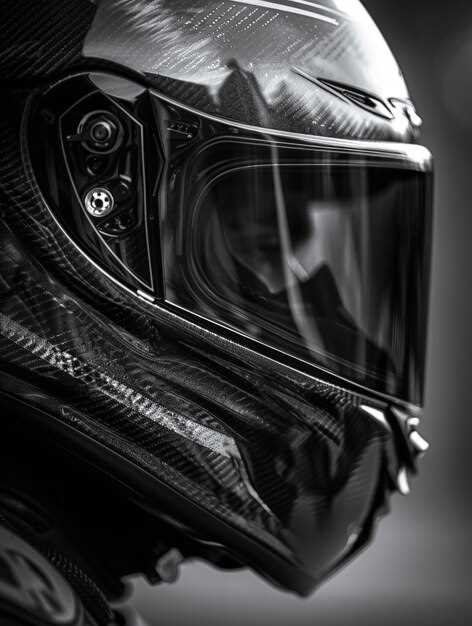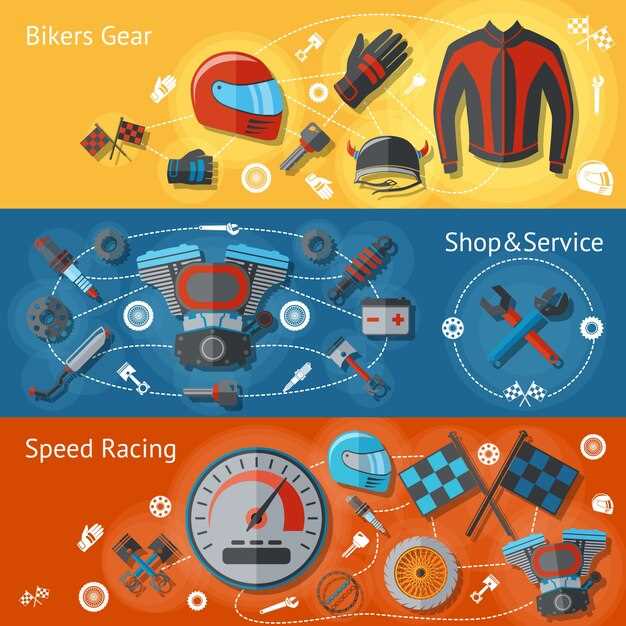
In the world of motorsports, protection has always been a primary concern for both drivers and teams. The high-speed environments, where split-second decisions can lead to catastrophic outcomes, demand that safety measures be continually evaluated and improved. Over the decades, the evolution of safety gear has mirrored the advancements in automotive technology and track safety, showcasing a relentless pursuit of progress in protecting those who dare to compete.
From the early days of racing, when leather caps and goggles were the norm, the quest for enhanced protection has led to groundbreaking innovations. As fatalities and injuries prompted reforms, materials like Nomex and Kevlar began to replace traditional fabrics, providing not only heat resistance but also superior strength. This shift reflects a broader understanding that safety is not merely an afterthought but a vital component of the sport.
The journey of safety gear has also been influenced by the introduction of sophisticated technology, making it possible to design equipment that is lighter and more effective without compromising performance. Helmets equipped with advanced impact-absorbing materials and HANS devices that prevent neck injuries exemplify the strides taken in the name of progress. Each development not only protects drivers but also sets the standard for future enhancements, ensuring that safety remains at the forefront of motorsport evolution.
Advancements in Helmet Technology and Driver Protection
Over the decades, helmet technology in motorsports has seen significant advancements, greatly enhancing driver protection. Early helmets were primarily constructed from simple materials with minimal impact absorption capabilities. Modern helmets, however, incorporate advanced materials such as carbon fiber, Kevlar, and expanded polystyrene (EPS) foam, providing superior durability and weight reduction.
The integration of technology into helmet design has also led to enhanced safety features. Improved energy absorption systems help dissipate force during accidents, significantly reducing the risk of traumatic brain injuries. Additionally, many contemporary helmets are equipped with multi-directional impact protection systems (MIPS) that further mitigate rotational forces, ensuring optimal protection for drivers.
Another notable advancement is the inclusion of communication systems and heads-up displays. These tech innovations allow drivers to maintain constant contact with their teams, enhancing situational awareness and overall performance. Improved ventilation systems have also been developed to increase comfort, allowing for better focus during intense racing conditions.
Furthermore, the mandatory use of helmet testing standards like Snell and FIA ensures that helmets meet rigorous safety benchmarks. This continuous evolution in helmet technology not only provides vital protection but also fosters a culture of safety that is critical in the high-risk environment of motorsports. The commitment to innovation reflects a broader trend toward maximizing driver safety through the integration of cutting-edge technology.
The Role of Fire-Resistant Gear in Enhancing Safety Standards

Fire-resistant gear has become a cornerstone of safety standards in motorsports, evolving significantly over the decades due to advancements in technology. Initially, drivers faced critical risks during high-speed races, where the threat of fire from engine failure or collisions was ever-present. The introduction of fire-resistant materials marked a crucial turning point in enhancing protective measures for competitors.
The development of fabrics such as Nomex and Kevlar has enabled manufacturers to create suits that not only resist ignition but also provide thermal protection. This technology allows drivers to withstand extreme heat levels without sustaining severe burns in the event of a fire. Progress in understanding how materials behave under high temperatures has led to more effective designs that ensure quicker escape times during emergencies.
Moreover, fire-resistant gear is not limited to suits alone. Helmets, gloves, and footwear have also undergone transformations to incorporate flame-retardant elements, contributing to a holistic approach to driver safety. This comprehensive protection reduces the likelihood of injuries, which has become a fundamental focus in the motorsport community.
The implementation of stringent safety regulations by governing bodies further emphasizes the importance of fire-resistant gear. Drivers are now required to wear this specialized equipment, ensuring that every competitor meets high safety standards. As a result, incidents related to fire are markedly less frequent, reflecting the positive impact of these technological advancements on motorsport safety.
In summary, fire-resistant gear plays a vital role in the ongoing evolution of safety standards within motorsports. As technology continues to progress, the effectiveness and reliability of such gear will only enhance, reinforcing the commitment to the safety and well-being of drivers in the high-stakes world of racing.
Impact of Data-Driven Innovations on Personal Safety Equipment

Data-driven innovations have significantly transformed personal safety equipment in motorsports, enhancing both protection and performance. By leveraging real-time data analytics, manufacturers can design gear that responds to the unique demands of high-speed racing environments. This progress allows for the creation of more precise safety features tailored to the specific risks faced by drivers.
Wearable technology, such as biometric sensors integrated into racing suits and helmets, provides valuable insights into the physical condition of drivers during competitions. These innovations monitor vital signs, detect fatigue, and assess the risk of injury, enabling teams to make informed decisions that prioritize driver safety. Such advancements have become crucial in mitigating health risks associated with extreme racing conditions.
The use of simulation data in the development of safety equipment further underscores the impact of innovative technologies. Engineers can analyze crash data and test materials under simulated conditions, leading to the creation of lighter yet stronger suits and helmets. This meticulous approach ensures that while drivers enjoy increased mobility and comfort, their level of protection is enhanced to withstand high-impact scenarios.
Continuous feedback loops from race events also inform the evolution of personal safety gear. Real-world data collected during races help in identifying changes in accident patterns and driver behavior, prompting manufacturers to adapt their designs accordingly. This responsiveness not only improves safety standards but also fosters a culture of constant improvement in the industry.
In conclusion, the integration of data-driven innovations into personal safety equipment represents a pivotal progression in motorsports. The emphasis on high-tech solutions and data optimization ensures that drivers receive the utmost protection while enhancing their performance on the track. As these technologies evolve, the future of safety gear will likely see even more groundbreaking advancements, further safeguarding the lives of those who push the limits of speed and endurance.
